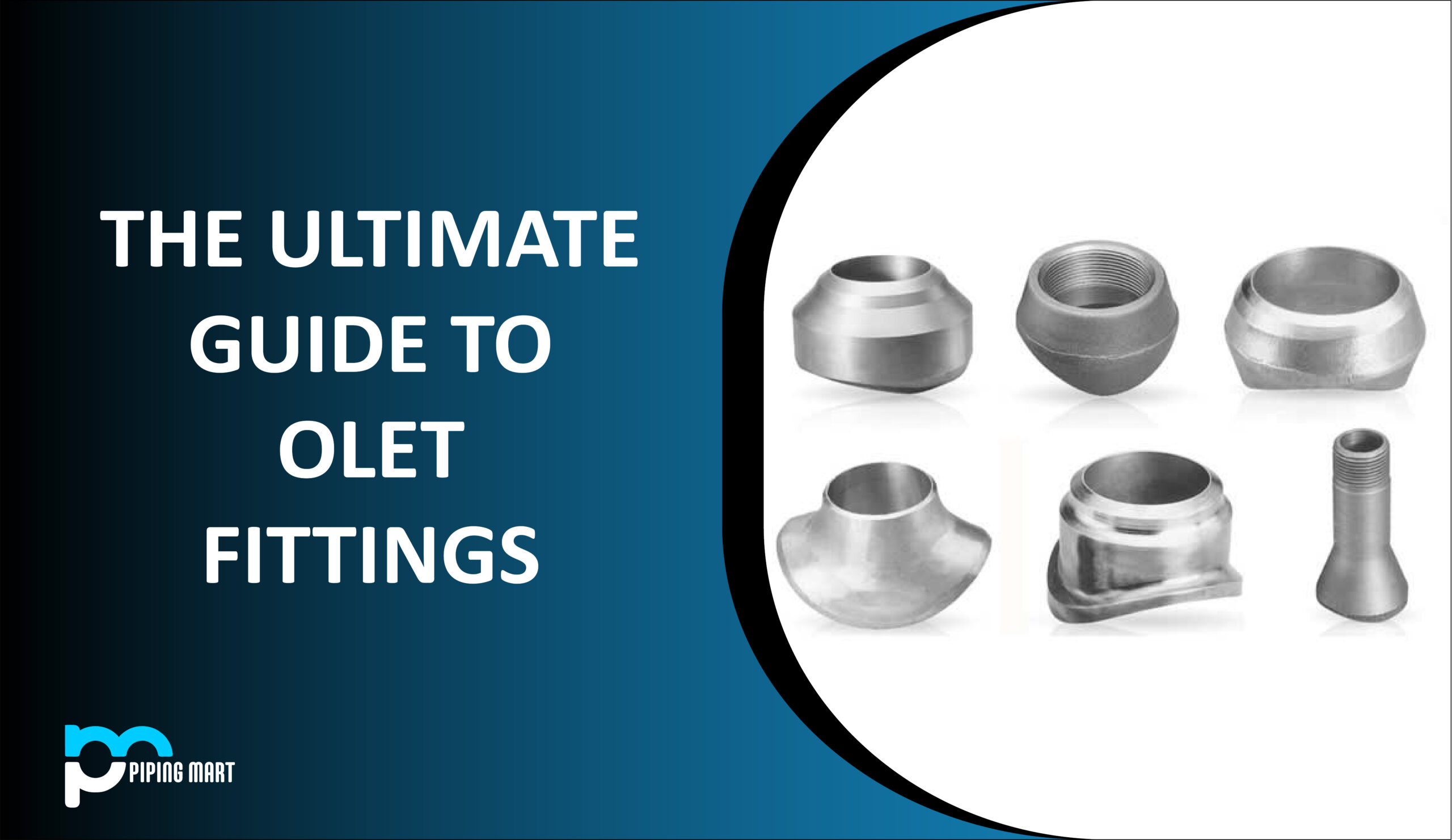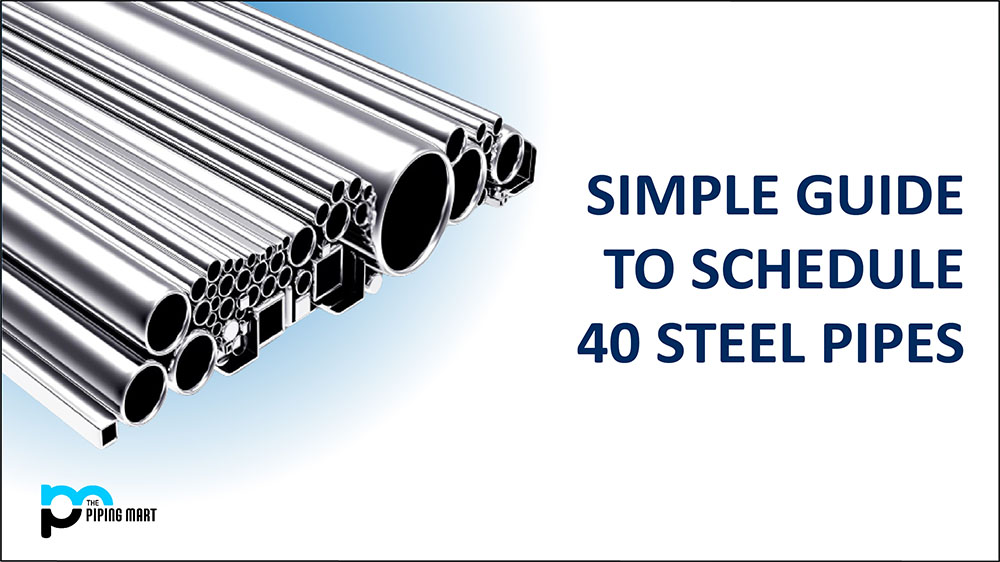What are Olet fittings?
Outlet Fittings, Branch Connection Fittings, and Self Reinforced Forged Fittings are different names for Olet Fittings. The header, run pipe, and branch or outlet pipe are connected using Olets fittings. Alternatively, anyone may define Olets fittings as fittings that offer an exit from a larger pipe to a smaller or equivalent pipe. Header/run pipe refers to the pipe on which Olets fittings are put, and branch/outlet pipe refers to the pipe linked to the opposite side of the Olets fitting. Olet-style branch connectors are an excellent substitute for reinforcement pads and conventional pipe tees since they include a self-reinforcing construction and come in various shapes and sizes. Different designs provide solutions for practically any pipe size or shape, offering a wide variety of connection options and solid and durable connections.
Olets are a self-reinforcing design with the same branching capability as a standard tee. Most typical olet designs are created to function as a 90-degree branch connection. However, specialised techniques can also be applied to 45-degree couplings or elbow bends. Olets must be properly installed to a pipe, pressure tank, or other piping system components, which usually necessitate welding. They are provided with a variety of end connections to accommodate various usage and connection techniques.
This is the most typical method of classifying different olet types. Olets only function when branching between pipes of equal or lesser size due to their construction. The run pipe can be branched in two different ways. The first branch is from pipe to pipe. Either with the help of a conventional tee or a reinforcing pad. Without TEE, one will weaken the pipe when a hole is cut for the pipe-to-pipe branching. This branch connection is made on-site; to prevent this, an additional reinforcing pad is welded to the pipe. In the second technique, the consumer employs a heavier, specially-made branch that serves as a self-reinforced branch in place of an additional reinforcement pad.
Olets is the name for this specially-built branch connection. When branch connections are required in a size where reducing tees are unavailable and the branch connections are relatively smaller than the header size, olets are typically used. Self-reinforced branches, or Olets, are created per ASME B31.3, the Process Piping Code. The Manufacturers Standardization Society’s MSS SP-97 is another available standard. Weldolet, Sockolet, Thredolet, Elbolet, and Nipolet are the most frequently used outlets. Other times, special Olets like Latrolet, Flexolet, and Coupolet are employed.
Why choose Olets over conventional branch connections?
Olet fittings have several advantages over standard tees and manufactured junctions. Among them are:
- Olets fittings can resist high pressure, although high-pressure lines are not recommended for junction construction.
- Olet fitting only requires two welds, whereas typical tees require three welds. This reduced the installation time.
- It is relatively simple to inspect.
- A smaller footprint makes the pipe system more versatile.
- Due to the meticulous design, fluid flow is unrestricted.
- Compared to a typical tee, welding is easier.
- It is simple to mount on the pipe rack.
- Given that it is a self-reinforced fitting, a reinforcing pad is unnecessary.
- Less material has to be removed from the header or a pipe has to be run to maintain the header’s strength.
What are the different types of Olet fittings?
- Weldolet
Due to its design, it is regarded as a butt weld fitting and is one of the most popular available branch connections. High-pressure and high-temperature environmental applications call for the employment of this type of outlet. A Weldolet, available in full size or reduced for a straight piece of pipe, creates a 90° branch connection. Due to its self-enforced construction, it is intended to reduce stress concentrations and provide integral reinforcement. Weldolet ends have bevels. As a result, the fitting is known as a butt weld.
Finishing end: bevel end
Type of Branch Pipe End: Bevel end on the branch pipe end
The size range is 2′′ to 24′′.
The size range that is most frequently used in the industry is 2″ to 8″. (Sizes in the affordable range.) Same thickness and schedule as the pipe.
- Sockolet
Sockolets use a socket instead of a bevelled end that has a bore that matches the outlet bore as well as a counterbore that is nearly the same size as the outlet’s outer diameter.This makes welding and installing the pipe easier by creating a socket into which it can fit. The branch pipe end of a Sockolet will be the plain end because it has a socket weld end as opposed to a Weldolet’s plain end. To create a 90° pipe branch, utilise Sockolets. It is used in low-pressure lines and pipes of modest sizes. The branch pipe is welded to the Sockolet with fillets. A Sockolet, like a Weldolet, needs a welded connection on the pipe header side.
END – Type of socket
End of Branch Pipe – Plain end
Sizes between 1/2″ and 4″.
The size range most typically used in the industry is 1/2″ to 2″. (It is considered a safe size range).
Schedule/Thickness: 3000#, 6000#, and 9000# (ratings for socket weld fittings).
- Thredolet
A Threadolet creates the 90° branch, similar to a Sockolet and Weldolet. The critical distinction is that the branching pipe or equipment is screwed onto the socket weld fitting, which has a female threaded end. The branches can be the same size or smaller. Thredolets have a threaded end with a bore that matches the output bore, enabling attachment without welding.
Threaded elbow ends of the NPT type, also known as the National Pipe Thread type, typically adhere to American specifications. Under the guidelines of ASME B1.20.1, the final preparation is carried out.
Branch pipes end with a female thread; male threaded sizes are 2000#, 3000#, and 6000#. Thickness/Schedule Range: 1/2′′ to 2′′ (usual ratings for threaded fittings).
- Sweepolet
A Sweepolet is a branch connection with a low-stress escalation factor that is shaped and integrally strengthened. It has a long fatigue life and minimal stress.
Typically used when the header is greater than 24′′ NPS and the branch is greater than 8′′ NPS, which is not fixed and varies from company to company.
It is utilised to increase fluid flow and decrease pressure drop.
It is used as a prerequisite for radiography.
Bevel-Ended Branch: Bevel-end pipe sizes range from 8′′ to 24′′. It is typically used in this size range.
The schedule numbers and thicknesses are the same as those for pipes.
- Latrolet
Only Latrolet fittings offer lateral branch connections at 45 degrees instead of the more common 90 degrees. There are multi-end connections available for Latrolets fittings. Latrolets can have butt weld, socket weld, or threaded connections to suit diverse applications and allow for 45-degree lateral connections as opposed to the standard 90-degree connection of other olet types.
END: Bevel, Socket Weld, and Female Threaded
Male threaded, plain, and bevel branch pipe ends
Sizes: 1/2″ to 2″ NPS for the threaded and socket weld ends.
For threaded and socket weld ends, the size range is greater than 2″ NPS.
Thickness/Schedule: Bevel end thickness will be the same as the pipe or system rating, and socket and threaded end thickness will be between 3000 and 6000 pounds.
Below 2′′ NPS, bevel/butt weld fittings may be utilised for food, pharma, and corrosive fluid.
- Flangeolet
The fittings known as flangeolet connect large-bore headers and flanged end components. If the line required frequent maintenance, breaker flanges might also be linked with Flangolet.
Flanged end Branch component (END) End: flanged end Dimensions: 1/2″ to 24″ (normally available).
Ratings include 150#, 300#, 600#, 900#, and 1500# ratings.
ASME B16.5 Flange End Preparation.
- Nipolet
The fittings known as nipolets connect small-bore thread end branches to large-bore headers with plain ends. Its primary uses are valve take-off, high-point vent, and low-point drain systems. The header or run pipe is prepped with a socket weld or threaded outlets on the branch pipe side before a Nipolet is welded onto it.
Type of End: Socket weld or female threaded end
Male threaded, or a plain end for the branch component.
The optimal size range is between 1/2″ and 2″.
6000# and 3000# ratings.
- Coupolet
Coupolet fittings, used in fire sprinkler systems and other low-pressure plumbing systems, are comparable to thread-end half couplings.
Type of End: Female threaded end.
Male threaded end on a branch component or fire sprinkler end
The optimal size range is between 1/2″ and 2″.
Rating: Useable up to a maximum weight of 300#.
Schedule/Thickness: 2000#, 3000#, and 6000#.
- Elbolet
Elbolet fittings can be used on 180° returns, 90° long radius elbows (most frequently used), and short radius elbows. It is commonly employed for thermowell and instrument connections. If a Weldolet cannot be utilised due to space constraints, Elbolet fittings can be used as a drain connection. The Elbolet can have threaded, socket, or butt weld connections at the ends.
Bevel Ends: Male Threaded, Socket Welded, and Bevel End Branch Male Threaded, Plain, and Bevel ends for Pipe and Instruments.
Sizes: 1/2″ to 2″ NPS (for threaded and socket weld ends)
Size Range: Greater than 2″ NPS (for threaded and socket weld ends)
Thickness and schedule: 3000# and 6000# (for both the socket weld and threaded ends); butt weld end rating: identical to the piping system.
- Insert Weldolet
Insert is like another contoured butt weld branch connection fitting like Sweepolet; the Weldolet fitting is similar. However, less critical applications are used. Radiography, ultrasound, and other standard non-destructive procedures can quickly check welding joints.
Bevel-Ended Branch: The plumbing system should not be as important as the pipe end, which should be beveled.
The schedule numbers and thicknesses are the same as those for pipes.
- Brazolet
Fittings made by Brazolet are intended for use with KLM and IPS brass or copper tubing. This fitting comes with threaded or socket end connectors.
Branch Connection and Run Sizes
When selecting a branch connection fitting, one may consider run diameters and how the fitting will fit into the intended piping system.
The output diameters of branching connection fittings are made to fit various run pipe sizes.
For instance, any run pipe diameter from 2-inches to 36-inches will fit a 1/2-inch olet fitting labelled by the standard 2-inch by 36-inch (run) by 1/2-inch.
The top of the 36″ run pipe and the base of the fitting at the crotch will have a maximum radial gap of 1/16″ when mounted. When welding, this gap hardly even exists.
Adjustments must be made to install the olet, but it’s crucial to ensure they stay consistent with the basic engineering design. For instance, an olet’s crotch or heel cannot be altered or shortened. Instead, as necessary, manipulate or shorten the skirt or toes. Size ranges arise in large part because of this dynamic.
Materials Used for Construction
Flanges and socket-weld fittings are formed of the same materials, which are mentioned as follows:
- A105: Standard Specification for Forgings Meant for Carbon Steel for Applications in Piping.
- A181: Standard Specification for General-Purpose Piping Forgings Made of Carbon Steel.
- A182: Forged fittings, valves, and parts for extreme-temperature service are specified following ASTM A182, a standard specification.
- A350: Standard Specification for Forgings of Carbon and Low-Alloy Steel, Requiring Notch Toughness Testing for Various Piping Components.

Pipingmart is B2B portal specializes in industrial, metal and piping products. Also, share latest information and news related to products, materials and different types grades to help business dealing in this industry.




